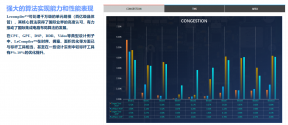EDA company Shanghai Lixin completes over 200 million yuan in Series B financing
According to the Pudong Science and Technology Innovation Group, Shanghai Lixin Software Technology Co., Ltd. (hereinafter referred to as Shanghai Lixin) recently completed a round B financing of over 200 million yuan, invested by Pudong Science and Technology Innovation Group, Hongtu Shanli, Guotou Venture Capital, CICC Capital's funds, Shenzhen Capital Group, Fujian Electronics, etc. The funds will be used for Shanghai Lixin's product iteration and market promotion.
Shanghai Lixin was founded in 2020 and has focused on the research and development of full-process tools in this field since its inception. Its core team is composed of well-known scholars and senior technical experts at home and abroad, with an average of more than 20 years of theoretical research, technology development and commercialization experience in the field of integrated circuit design EDA tools. Founder and Chairman Chen Jianli is a professor and doctoral supervisor at the School of Microelectronics of Fudan University. He has been focusing on the algorithm development of EDA layout tools since 2007.
Shanghai Lixin focuses on the development of integrated circuit electronic design automation (EDA) tools such as digital circuit physical design, logic synthesis, 3DIC/chiplet system design, and is committed to creating reliable tools for digital circuit design and helping to build China's independent chip R&D ecosystem.
Currently, Lixin has R&D centers in Shanghai, Beijing, Fuzhou and Changsha, with a team size of nearly 300 people, of which more than 2/3 have master's and doctoral degrees.

